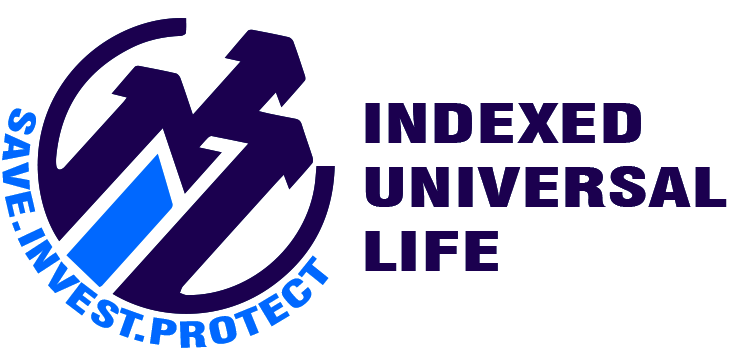IUL Illustrations
Indexed Universal Life (IUL) illustrations offer a comprehensive overview of the guarantees included in an IUL policy. In-force IUL illustrations allow policyholders to assess the current performance and progress of their existing IUL policy.
Navigating IUL Policy Illustrations and Industry Standards
With numerous Indexed Universal Life (IUL) policies available from different insurers, it can be challenging for prospective clients to identify the best option. IUL illustrations are designed to help clients compare policies and make informed decisions. However, these illustrations have sparked debate within the life insurance industry due to their ability to highlight differences between insurers, which can sometimes be divisive or even inaccurate.
To address this issue, the National Association of Insurance Commissioners (NAIC) established guidelines to regulate IUL illustrations, ensuring clients receive reliable information. These actuarial guidelines, known as AG49, aim to curb unrealistic growth projections and manage discrepancies between policies, providing more accurate and standardized illustrations for consumers.

Understanding How IUL Works
For many buyers, the ideal Indexed Universal Life (IUL) policy is one that offers the highest cash value returns by the end of the year. While IUL policies do guarantee some returns regardless of market performance, it’s important to note that the insurance company sets an interest cap, which limits the maximum return on your investment.
Some argue that IUL policies are a better option than investing directly in the stock market, but there is no universal investment strategy that works for everyone. IUL might be the perfect solution for one person and unsuitable for another. This is why it’s crucial for prospective buyers to seek guidance from a highly-rated IUL expert to ensure the best fit for their financial needs.
“

Get personalized quotes — Free, No-Obligation IUL Quote: Enter Info, Calculate A Deposit In 5 Min, Talk To An Agent. It Costs $0 To Run The Numbers & Calculate A Recurring Deposit. No-Obligation IUL Estimate In 5 Min.
Why IUL Policies Stand Out in Growth Potential and Risk Management
Indexed Universal Life (IUL) policies are credited with growth differently from other types of universal life insurance. The cash value of an IUL increases based on the performance of a chosen market index, providing greater growth potential compared to whole life or traditional universal life policies. Additionally, IUL policies carry lower investment risk than stock market-based options like variable life insurance or mutual funds, making them a favored choice among industry analysts over variable life or traditional universal life insurance.
In summary, comparing various IUL policies and alternative solutions is crucial to making an informed decision. Consulting with an insurance professional who specializes in IUL can help you assess whether an IUL policy is the right fit for your needs and guide you in selecting the best option.Key Components of an IUL Illustration
An Indexed Universal Life (IUL) illustration must contain essential elements to demonstrate its value to prospective clients. Before investing in any IUL, it’s crucial to understand the policy’s benefits, potential returns, and how it might perform in unfavorable market conditions or if internal costs rise. Here are the three main components of an IUL illustration:
Guaranteed Returns: Your IUL illustration should clearly show the policy’s guaranteed returns, which are often the primary reason people invest in IULs. This indicates the minimum return you can expect from the policy. It’s important to focus on these guarantees, rather than being swayed by projections of high returns, as this ensures a realistic understanding of the policy. IULs are excellent products when buyers are aware of all potential future outcomes, not just the best-case scenario.
Potential Returns: The illustration should also detail possible returns at various crediting rates. Your IUL expert can help you interpret this section to understand the estimated amounts you might receive under different market conditions. This helps prospective clients gauge the policy’s performance under a range of circumstances.
Crediting Rate and Insurance Costs: Understanding the cost of insurance is vital for determining the policy’s long-term viability. While the best IUL companies may meet or exceed your expectations, many insurers retain the right to adjust insurance costs, which could affect returns. It’s also important to know whether the company can lower the interest cap. This information is crucial and should be a focal point in any comprehensive IUL illustration.In summary, comparing various IUL policies and alternative solutions is crucial to making an informed decision. Consulting with an insurance professional who specializes in IUL can help you assess whether an IUL policy is the right fit for your needs and guide you in selecting the best option.
Significant Changes in IUL Illustrations
Determining the appropriate crediting rate for Indexed Universal Life (IUL) policies has long been a challenge. Many IUL agents struggle to provide a definitive answer on what the correct crediting rate should be. The introduction of AG49, however, aimed to address the issue of what rates of return are reasonable to include in an illustration. IUL experts emphasize the importance of full disclosure and client understanding. Clients working with knowledgeable IUL professionals are more likely to receive clear explanations about the policy’s income and growth components, helping them make informed decisions about whether an IUL suits their retirement income plan, and if so, which specific policy is the best fit.
According to the National Association of Insurance Commissioners (NAIC), crediting rates between 6.5% and 8.25% are considered sustainable for an IUL policy. In a 2015 review, the NAIC’s Life Actuarial Task Force recognized the need to limit illustratable crediting rates to increase clarity. The American Council of Life Insurers (ACLI) also supports regulating IUL illustrations and ensuring they align with actuarial guidelines, arguing that similar IUL products should not have drastically different illustrated rates.
Consistency in IUL illustrations is essential to maintain trust, and the 2015 actuarial guidelines successfully reduced maximum illustrated rates for IUL policies. A survey by Susan J. Saip and Carl A. Friedrich of Millman Financial Risk Management revealed that the average illustrated rate fell to 6.69% in the nine months following the implementation of these guidelines.
Insurers and IUL agents use various methods for illustrating in-force policies, including adjusting spreads and caps, creating new illustration scales, supporting in-force blocks with surplus, and discontinuing certain product illustrations.
In conclusion, standardized illustration practices are necessary to prevent inconsistencies across similar IUL products. The NAIC’s 2015 guidelines have been widely accepted by the ACLI and IUL experts, reducing discrepancies in illustrations and underscoring the need for consumers to consult with IUL professionals. If you are considering an IUL policy, it’s crucial to seek advice from a top-rated financial professional and IUL expert to compare your current IUL illustration with other tailored solutions.

